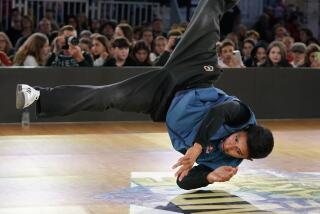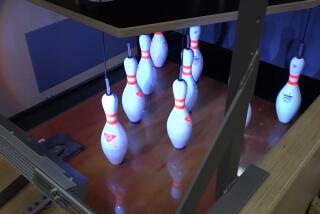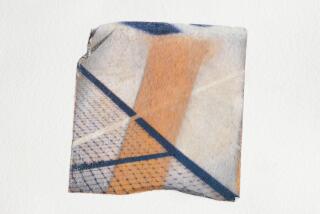In China 17,000 watch the ābirdieā and smile, and American enthusiast says thatās good for badminton
When China staged its first world championship sports competition in 20 years last month, 17,000 excited, roaring fans filled Beijingās huge indoor stadium for the finals.
R. Stanton Hales of Claremont was there, understanding the enthusiasm as few Americans do.
āYou canāt imagine the excitement--no athletic activity can match this,ā Hales said. āNothing comes close to the physical demand and excitement of badminton.ā
Badminton? Excitement? World championship playoffs?
āItās the least understood sport in America,ā Hales said. āThe misperception of the game is enormous.ā
Hales, who is associate dean and professor of mathematics at Pomona College, is president of the U. S. Badminton Assn., a lifelong badminton player, coach of the American team that played in China. He and his wife, who met through badminton, and two children have held 19 national badminton championships.
He can even take some credit for the ancient gameās latest achievement: its acceptance in 1985 by the International Olympics Committee as a medal sport that will be played in the Barcelona Games in 1992.
āItās exciting to have that happen when Iām president,ā said Hales, whose trip with the team to China from May 18 to 24 was financed in part by the U. S. Olympic Committee.
Hales said badminton may have originated in China. There is evidence that balls with feathers, perhaps forerunners of the shuttlecocks used in badminton, existed in China as long ago as 2000 BC.
āEven today youāll see Chinese people kicking a shuttlecock the way soccer players kick balls,ā he said.
Halesā wife, Diane, has written a history of badminton, which may have begun as an entertaining pastime of hitting a feathered ball. It was introduced to Europe about the time of Marco Polo in the late 13th Century. Court pictures from the 17th and 18th centuries in Sweden, France and England show the battledore (racket) and shuttlecock (probably named for a weaverās shuttle that moves back and forth, and a cockās feathers that make it fly in a strange way).
According to Diane Halesā research, an athletic family that occupied the English estate called Badminton in the 1850s took the sport indoors one rainy day and tried hitting the ābird,ā as itās often called, over a string tied across the room. Then, for the first time, the players tried to make the other person miss.
It grew to be the No. 1 sport in Indonesia and one of the major sports in India, China, Denmark, Korea, England and Sweden, and its popularity ranks high in many other countries. England has created international cups--the Thomas Cup for men and the Betty Uber Cup for women.
Hales points out that badminton is usually an indoor game that is most popular in cold, windy countries.
From a āhigh-society, tea-timeā sport in the eastern United States, badminton gained national popularity in the 1930s but was dealt a blow during World War II, when many buildings the courts occupied were put to other war-related uses. It has never recovered its old popularity.
āYou can do so much with the game,ā Hales said. āThe shuttlecock can hit 120 miles per hour. The gameās aerobic demands are enormous, and it can be excruciatingly demanding. You have to be explosively quick and agile. And yet itās easy for children because the racket is light and it can be played slowly.ā
In some countries, children are trained for years and hit their peak ability about 18 and 19, Hales said. When one reaches his 30s, he said, āthe demands of the game are too great.ā
In China last month, American teams lost almost all events in the first rounds. āWorld championships are beyond us now,ā Hales said.
Hales, 45, is classified as a veteran who won the national menās singles in 1970 and 1971 and scores of other titles. His wife won the national womenās championship in 1971.
Diane Hales has won four junior national titles, one national collegiate championship and four national adult championships. She teaches badminton at Citrus College and is head coach for a youth group that is supported by the Amateur Athletic Foundation in Los Angeles, and holds two other part-time teaching jobs.
Their daughter, Karen, has played āsince she was born,ā according to her father, and next year will enter Swarthmore College, which she chose in part because of its badminton program.
Christopher Hales, 10, holds two singles national badminton championships for boys under 11.
āWeāve played in nine countries, and we have close friends in 30 countries,ā Hales said. āThis is worth a fortune. Most people donāt have this kind of access to the world.ā
More to Read
Go beyond the scoreboard
Get the latest on L.A.'s teams in the daily Sports Report newsletter.
You may occasionally receive promotional content from the Los Angeles Times.






